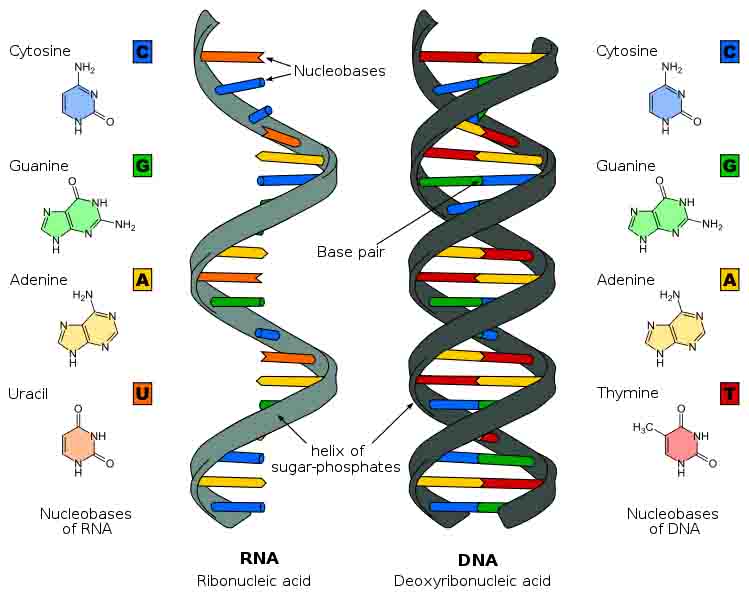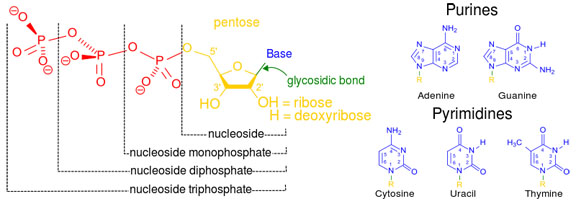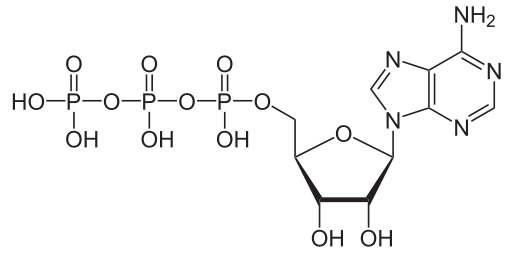 | ||||
Nucleotides & Nucleic Acids
ATP, Ribonucleic Acid (RNA) & Deoxyribonucleic Acid (DNA)
What Are Organic Molecules?
Organic molecules contain carbon-hydrogen bonds, are found in living things, and can be very large molecules. The major classes of organic macromolecules are carbohydrates,
Article Summary: What kind of molecules are nucleotides and nucleic? What are they made of? This article covers the basics.
What Are Nucleotides & Nucleic Acids?
Page last updated:
4/2016
 | ||||||
SPO VIRTUAL CLASSROOMS
What Are Nucleotides?
Nucleotides are monomers (small molecules) that are the building blocks of nucleic acids. Each nucleotide, and consists of 3 portions:
- pentose sugar (ribose)
- one or more phosphate groups
- one of five cyclic nitrogenous bases
Some nucleotides are put together to form nucleic acid (DNA & RNA) macromolecules, whereas others function on their own.
You have free access to a large collection of materials used in a college-level introductory Cell Biology Course. The Virtual Cell Biology Classroom provides a wide range of free educational resources including Power Point Lectures, Study Guides, Review Questions and Practice Test Questions.
ATP: The Energy Transfer Molecule
Adenosine 5'-triphosphate (ATP) is a multifunctional nucleotide, most important as the "molecular currency" of intracellular energy transfer. Like tiny rechargeable batteries, ATP molecules transport chemical energy within a biological cell. These molecules can move energy around because the phosphate bonds contain a lot of potential energy, which is released when they are broken.
During photosynthesis and cellular respiration, ATP is produced from ADP (adenosine diphosphate), an inorganic phosphate and added energy. ATP energy is consumed by a multitude of cellular processes.
ATP




